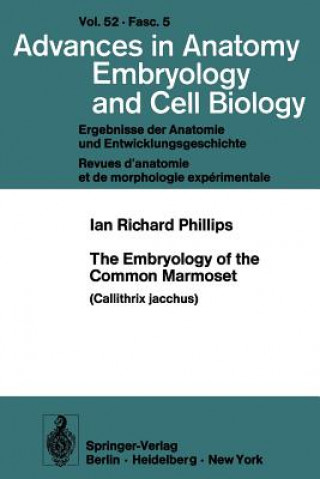
Kód: 06805768
Embryology of the Common Marmoset
Autor I. R. Phillips
The primates represent a diverse group with the phylogenetic relationships of the var ious species reflected in their early embryonic development. The members of the Tupaiidae, Lemuridae and Lorisidae show great similarities to th ... celý popis
- Jazyk:
 Angličtina
Angličtina - Vazba: Brožovaná
- Počet stran: 48
Nakladatelství: Springer-Verlag Berlin and Heidelberg GmbH & Co. KG
- Více informací o knize

3313 Kč

Skladem u dodavatele v malém množství
Odesíláme za 12-15 dnů
Potřebujete více kusů?Máte-li zájem o více kusů, prověřte, prosím, nejprve dostupnost titulu na naši zákaznické podpoře.
Přidat mezi přání
Mohlo by se vám také líbit
-

Common Marmoset in Captivity and Biomedical Research
6137 Kč -

Your Soul Remembers
502 Kč -

Stonehenge
423 Kč -

Selkup Texts With Phonetic Introduction and Vocabulary
4224 Kč -

Black Out
481 Kč -

Technischer Fortschritt, Neue Guter Und Internationaler Handel
1830 Kč -

M diation Et Ressources Sociales Dans La Cr ation d'Une Spin-Off
4315 Kč
Darujte tuto knihu ještě dnes
- Objednejte knihu a zvolte Zaslat jako dárek.
- Obratem obdržíte darovací poukaz na knihu, který můžete ihned předat obdarovanému.
- Knihu zašleme na adresu obdarovaného, o nic se nestaráte.
Více informací o knize Embryology of the Common Marmoset
Nákupem získáte 331 bodů
 Anotace knihy
Anotace knihy
The primates represent a diverse group with the phylogenetic relationships of the var ious species reflected in their early embryonic development. The members of the Tupaiidae, Lemuridae and Lorisidae show great similarities to the lower mammals and even birds. The Tarsiidae represent an intermediate step and the Platyrrhini and Catarrhini exhibit the greatest similarities to man. During the period of embryogenesis, the dimensions of an embryo are insufficient guide to its age and much more reliable information can be derived from a study of its external form and internal structure. Examination of embryological specimens from a variety of simian species dates back to the early 1900's but much of this material was collected in a haphazard way from animals shot in the wild. Heuser and Streeter (1941) depicted a series of embryos of the rhesus monkey (Macaca mulatta) and correlated their gestational age with external form and size. Streeter (1951) arranged human em bryos, between 24. ± 1 and 47. ± 1 days of post-ovulation age, into age groups or devel opmental horizons based on their external form and internal structure. Each horizon was two days apart and numbered XI to XXIII. The transition from embryo to fetus occurred at the end of horizon XXIII and was arbitrarily dermed as the point where bone marrow invaded the cartilaginous precursor in the humerus. The earlier stages I-X have been dermed subsequently, (Heuser and Corner, 1957; O'Rahilly, 1973).
 Parametry knihy
Parametry knihy
Zařazení knihy Knihy v angličtině Medicine Medicine: general issues Medical equipment & techniques
3313 Kč
- Plný název: Embryology of the Common Marmoset
- Podnázev: Callithrix jacchus
- Autor: I. R. Phillips
- Jazyk:
 Angličtina
Angličtina - Vazba: Brožovaná
- Počet stran: 48
- EAN: 9783540079552
- ISBN: 3540079556
- ID: 06805768
- Nakladatelství: Springer-Verlag Berlin and Heidelberg GmbH & Co. KG
- Hmotnost: 120 g
- Rozměry: 235 × 155 × 4 mm
Oblíbené z jiného soudku
-

Dmt : the Spririt Molecule
373 Kč -

Bad Pharma
358 Kč -

Deep Medicine
700 Kč -

Basic & Applied Concepts of Blood Banking and Transfusion Practices
3241 Kč -

Oxford Handbook of Clinical Examination and Practical Skills
1099 Kč -

Oxford Handbook of Clinical and Laboratory Investigation
1137 Kč -

EHRA Book of Pacemaker, ICD, and CRT Troubleshooting
3365 Kč -

EHRA Book of Interventional Electrophysiology
3167 Kč -

Fundamentals of Biostatistics
5870 Kč -

Science of Cooking
1977 Kč -

Cytopathology
1841 Kč -

Comparative Physiology, Natural Animal Models And Clinical Medicine: Insights Into Clinical Medicine From Animal Adaptations
3212 Kč -

Immunohematology
3324 Kč -

Pocket Evidence Based Medicine
1414 Kč -

Rehabilitation with rTMS
3313 Kč -

Clinical Chemistry
3313 Kč -
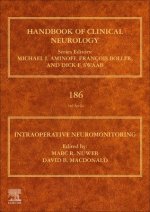
Intraoperative Neuromonitoring
8211 Kč -

Immortal Life of Henrietta Lacks
309 Kč -

Plague
421 Kč -
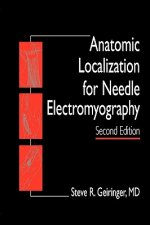
Anatomic Localization for Needle EMG
1938 Kč -

Rigor Mortis
369 Kč -
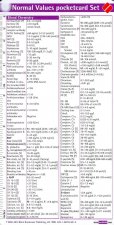
Normal Values Pocketcard
210 Kč -

Maria Treben's Cures
511 Kč -

Intuitive Biostatistics
3138 Kč -

Implantable Cardioverter - Defibrillators Step by Step - An Illustrated Guide
2100 Kč -

Politics of Evolution
1776 Kč -

Manual of 3D Echocardiography
2810 Kč -

Making a Spinet by Traditional Methods
428 Kč -

Proteomics in Functional Genomics
6549 Kč -

Connecting Brain Research With Effective Teaching
1613 Kč -

Factories of Death
1415 Kč -

Designing EEG Experiments for Studying the Brain
2437 Kč -

Research in Medicine
1488 Kč -

Tendon Regeneration
4224 Kč -

Bergey's Manual of Systematic Bacteriology
13404 Kč -

Research Methods in Human Skeletal Biology
2454 Kč -

Practical Hemostasis and Thrombosis 3e
3555 Kč -

Histopathology
1411 Kč -

Aesthetic Laser Therapy
7424 Kč -

Urodynamics
3682 Kč -

Bergey's Manual of Systematic Bacteriology
9775 Kč -
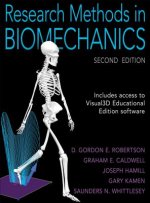
Research Methods in Biomechanics
2748 Kč -

Lung Cancer
3611 Kč -

Applied Longitudinal Data Analysis
4598 Kč -

EMG Pearls
2198 Kč -
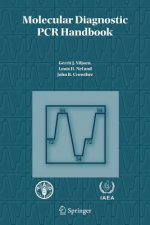
Molecular Diagnostic PCR Handbook
6875 Kč -

Atlas of Cerebrospinal Fluid Cells
3313 Kč -

Corneal Biomechanics and Refractive Surgery
1681 Kč -

Introduction to Tissue-Biomaterial Interactions
5886 Kč
Osobní odběr Praha, Brno a 12903 dalších
Copyright ©2008-24 nejlevnejsi-knihy.cz Všechna práva vyhrazenaSoukromíCookies


 Vrácení do měsíce
Vrácení do měsíce 571 999 099 (8-15.30h)
571 999 099 (8-15.30h)